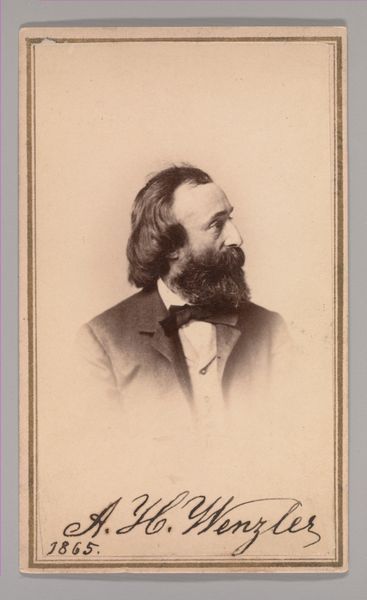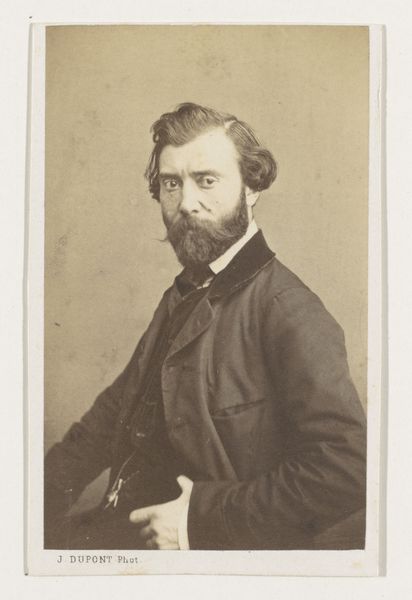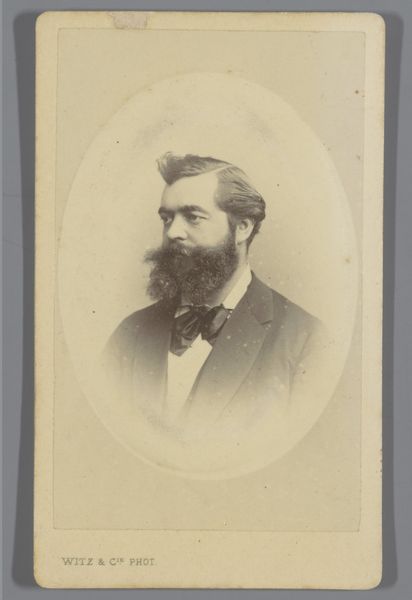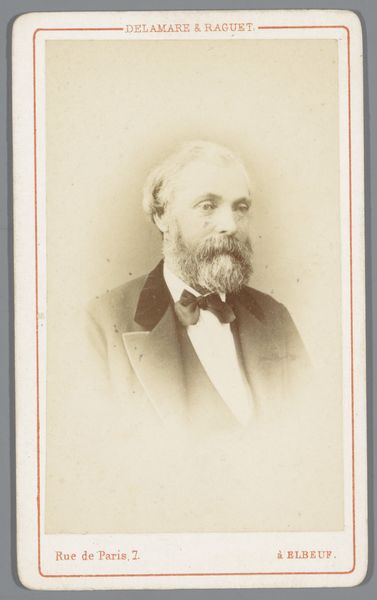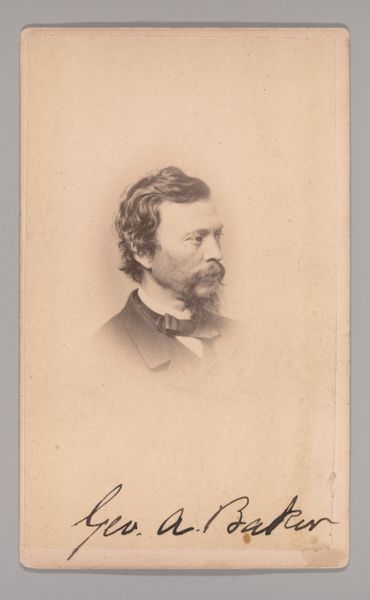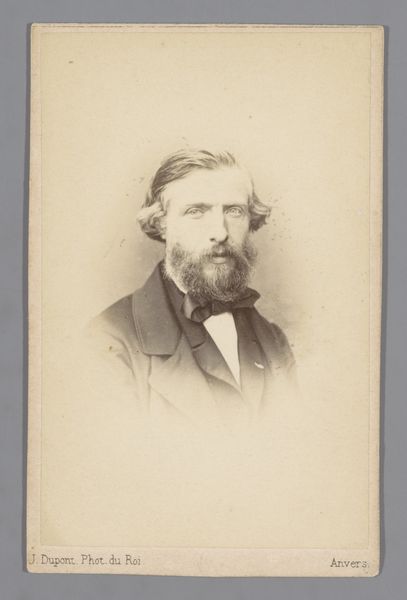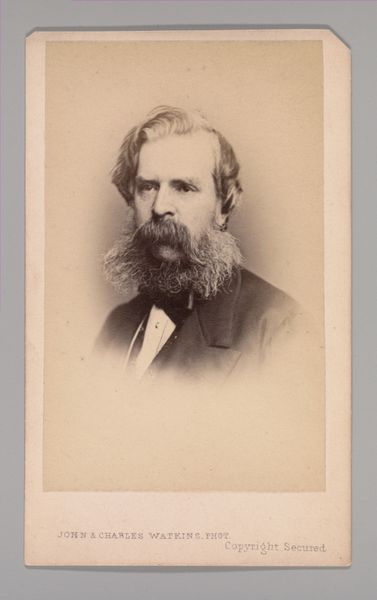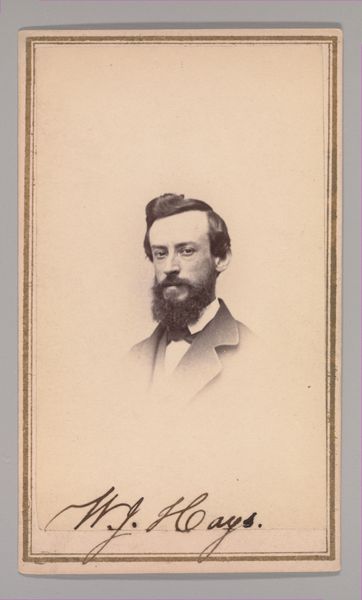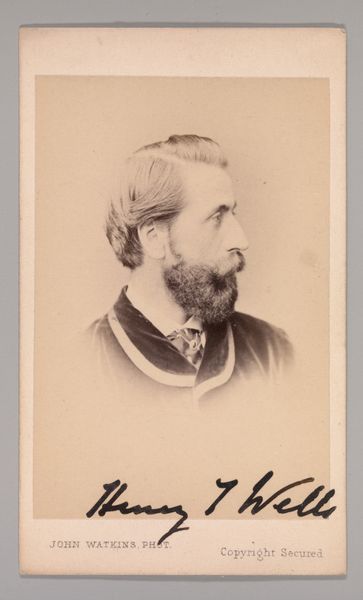![[Charles Lucy] by John and Charles Watkins](/_next/image?url=https%3A%2F%2Fd2w8kbdekdi1gv.cloudfront.net%2FeyJidWNrZXQiOiAiYXJ0ZXJhLWltYWdlcy1idWNrZXQiLCAia2V5IjogImFydHdvcmtzL2MwMWUyMGQ1LTM0MmMtNDNkYy1iNGI3LTdjYzRjZDNjYTFjYi9jMDFlMjBkNS0zNDJjLTQzZGMtYjRiNy03Y2M0Y2QzY2ExY2JfZnVsbC5qcGciLCAiZWRpdHMiOiB7InJlc2l6ZSI6IHsid2lkdGgiOiAxOTIwLCAiaGVpZ2h0IjogMTkyMCwgImZpdCI6ICJpbnNpZGUifX19&w=3840&q=75)
photography, albumen-print
#
portrait
#
photography
#
men
#
albumen-print
Dimensions: Approx. 10.2 x 6.3 cm (4 x 2 1/2 in.)
Copyright: Public Domain
Curator: Right, let's discuss this striking portrait, '[Charles Lucy]', an albumen print created in the 1860s by John and Charles Watkins. It's currently residing here at the Metropolitan Museum of Art. Editor: It looks like a faded memory. Sepia tones whispering stories of a time long gone. And that beard, majestic. Almost like a waterfall cascading down. He exudes this sense of deep contemplation, doesn’t he? Curator: Precisely. The albumen print process, quite common then, gives it that soft, almost dreamlike quality. Notice how the sharp focus is primarily on the face, particularly around the eyes and forehead, drawing our gaze. It exemplifies a focus on the human subject using photographic technologies of the era. Editor: His gaze... yes. Distant, perhaps a little melancholic. The softness you mention emphasizes vulnerability, but there is such resolve etched into his brow. It feels contradictory and compelling at once. What kind of subject was common for portraiture then? Curator: Photographic portraiture became popular in the mid-19th century. These portraits acted as symbols of status, commemoration, or social belonging for both individuals and families. John and Charles Watkins were quite skilled in their rendering of tone, and especially careful to compose the scene so as to highlight the key aspect of Lucy's personality and positionality. Note the balance created between dark and light to make that beard seem almost unreal in volume. Editor: Unreal is the perfect word! And in looking closely, one observes that the tie almost fades into the neck. But look how that beard has claimed center stage, its density almost overwhelming. It’s an interesting focal point. Curator: An intended effect. And the lack of vivid colors heightens that effect even further, driving viewers towards the monochromatic values. This kind of stylistic choice speaks volumes regarding social ideas regarding colorization in artmaking at the time. Editor: You are correct. He almost recedes while the beard charges forward. I see an era defined through one man’s beard and haunting gaze, if that makes sense. What is the contemporary message of this artwork for audiences now? Curator: Beyond the technical and historical contexts, this piece showcases the enduring power of photography. And in capturing and conveying nuanced human experiences across time and cultures, it's hard to turn away. Editor: Exactly. It definitely made me stop and stare. Thanks for that in-depth exploration.
Comments
No comments
Be the first to comment and join the conversation on the ultimate creative platform.


